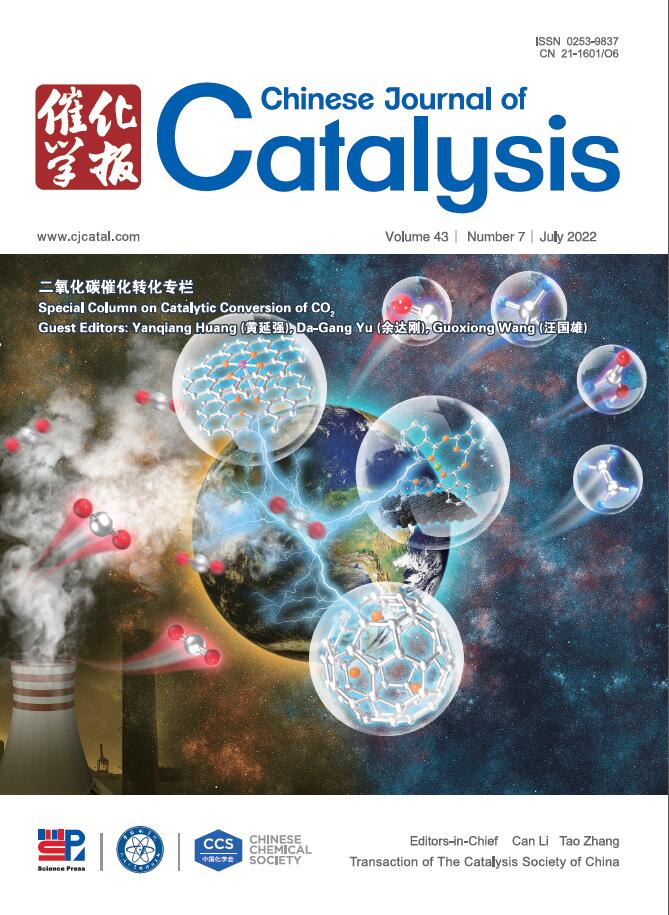Dynamic proton migration in dual linkage-engineered D-π-A system for photosynthesis H2O2 generation
IF 15.7
1区 化学
Q1 CHEMISTRY, APPLIED
引用次数: 0
Abstract
Accelerated charge migration and proton transfer to the reaction site are critical factors for improving photocatalytic efficiency. However, realizing both simultaneously is challenging because of the sluggish water (proton source) oxidation kinetics and interdependent redox reactions. Herein, we design an imide and hydrogen bond to connect carbon nitride ports of the D-π-A system with the dual-engineered linkages. The system uses an acetylene functional group and an imidazole ring as spatially separated water oxidation and oxygen reduction reaction (ORR) catalytic centers for photogenerated charge separation, respectively. The imine bond is a bridge grafted to the oxidation site to act as a hydrogen proton trap, and the hydrogen bond formed between reduction site and carbon nitride is used as the channel for instantaneous proton delivery to the reduction center. In situ characterization confirms that the linking sites protonation optimizes the pathway of ORR to H2O2 and facilitates the *OOH intermediates generated. It is concluded that proton transport plays a critical role in optimizing photocatalytic H2O2 production. Our work provides a strategy to improve dynamic proton transfer mechanisms.
求助全文
约1分钟内获得全文
求助全文
来源期刊

Chinese Journal of Catalysis
工程技术-工程:化工
CiteScore
25.80
自引率
10.30%
发文量
235
审稿时长
1.2 months
期刊介绍:
The journal covers a broad scope, encompassing new trends in catalysis for applications in energy production, environmental protection, and the preparation of materials, petroleum chemicals, and fine chemicals. It explores the scientific foundation for preparing and activating catalysts of commercial interest, emphasizing representative models.The focus includes spectroscopic methods for structural characterization, especially in situ techniques, as well as new theoretical methods with practical impact in catalysis and catalytic reactions.The journal delves into the relationship between homogeneous and heterogeneous catalysis and includes theoretical studies on the structure and reactivity of catalysts.Additionally, contributions on photocatalysis, biocatalysis, surface science, and catalysis-related chemical kinetics are welcomed.
文献相关原料
公司名称
产品信息
阿拉丁
Melamine
阿拉丁
Methanol
阿拉丁
Triethanolamine
阿拉丁
Concentrated Sulfuric Acid
阿拉丁
Hydrogen Peroxide
 求助内容:
求助内容: 应助结果提醒方式:
应助结果提醒方式:


